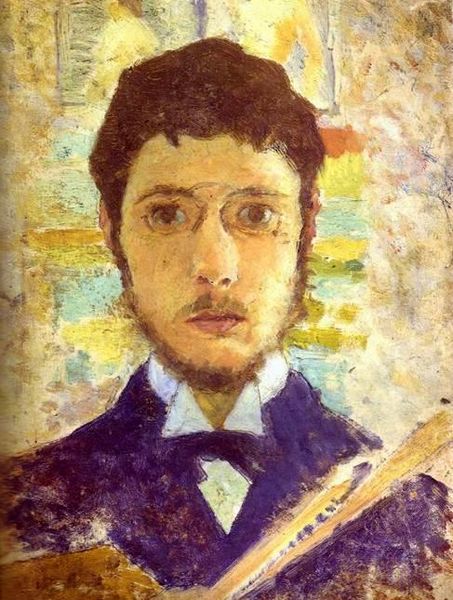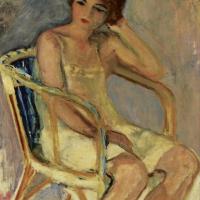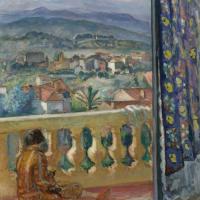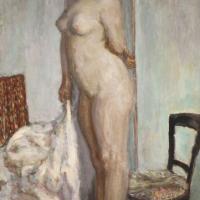PIerre Bonnard
PIerre Bonnard
PIerre Bonnard (1867-1947)
Pierre Bonnard (3 October 1867 — 23 January 1947) was a French painter and printmaker, as well as a founding member of the Post-Impressionist group of avant-garde painters Les Nabis. Bonnard preferred to work from memory, using drawings as a reference, and his paintings are often characterized by a dreamlike quality. The intimate domestic scenes, for which he is perhaps best known, often include his wife Marthe de Meligny. Bonnard was born in Fontenay-aux-Roses, Hauts-de-Seine on 3 October 1867. He led a happy and carefree youth as the son of a prominent official of the French Ministry of War. He studied classics during his baccalaureate. At the insistence of his father, Bonnard studied law, graduating and briefly practicing as a barrister in 1888. However, he had also attended art classes at Ecole des Beaux-Arts and Académie Julian, and soon decided to become an artist.

Bonnard is known for his intense use of color, especially via areas built with small brush marks and close values. His often complex compositions—typically of sunlit interiors and gardens populated with friends and family members—are both narrative and autobiographical. Bonnard's fondness for depicting intimate scenes of everyday life, has led to him being called an "Intimist"!
In 1938 there was a major exhibition of his work along with Vuillard's at the Art Institute of Chicago. He finished his last painting, The Almond Tree in Blossom, a week before his death in his cottage on La Route de Serra Capeou near Le Cannet, on the French Riviera, in 1947. The Museum of Modern Art in New York City organized a posthumous retrospective of Bonnard's work in 1948, although originally it was meant to be a celebration of the artist's 80th birthday.
Although Bonnard avoided public attention, his work sold well during his life. At the time of his death his reputation had already been eclipsed by subsequent avant-garde developments in the art world; reviewing a retrospective of Bonnard's work in Paris in 1947, Christian Zervos assessed the artist in terms of his relationship to Impressionism, and found him wanting. "In Bonnard's work," he wrote, "Impressionism becomes insipid and falls into decline." In response Henri Matisse wrote "I maintain that Bonnard is a great artist for our time and, naturally, for posterity."
Two major exhibitions of Bonnard's work took place in 1998: February through May at the Tate Gallery in London, and from June through October at the Museum of Modern Art in New York City.
In 2009 the exhibition "Pierre Bonnard: The Late Interiors" was shown at the Metropolitan Museum of Art.
In 2016 the Legion of Honor in San Francisco hosted an exhibit "Pierre Bonnard: Painting Arcadia", featuring more than 70 works that span the artist’s entire career.
Bonnard's record price in a public sale was for Terrasse à Vernon, sold by Christie's in 2011 for €8,485,287 (£7,014,200).
In 2014 the painting La femme aux Deux Fauteuils (Woman with Two Armchairs), with an estimated value of around €600,000 (£497,000), which had been stolen in London in 1970, was discovered in Italy. The painting, together with a work by Paul Gauguin known as Fruit on a Table with a Small Dog had been bought by a Fiat employee in 1975, at a railway lost-property sale, for 45,000 lira (about £32).
Member of the Royal Academy of Science, Letters and Fine Arts of Belgium on 2.7.1936.
Bonnard features heavily in the 2005 Booker prize winning novel, The Sea by John Banville. In the novel, the protagonist and art historian Max Morden is writing a book about Bonnard and discusses the painter's life and work throughout.





